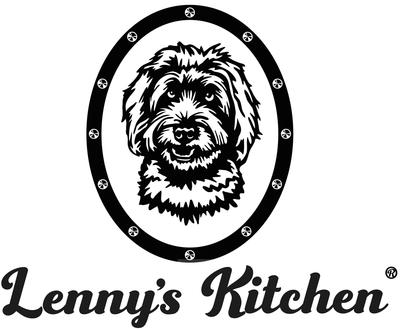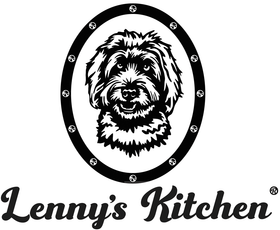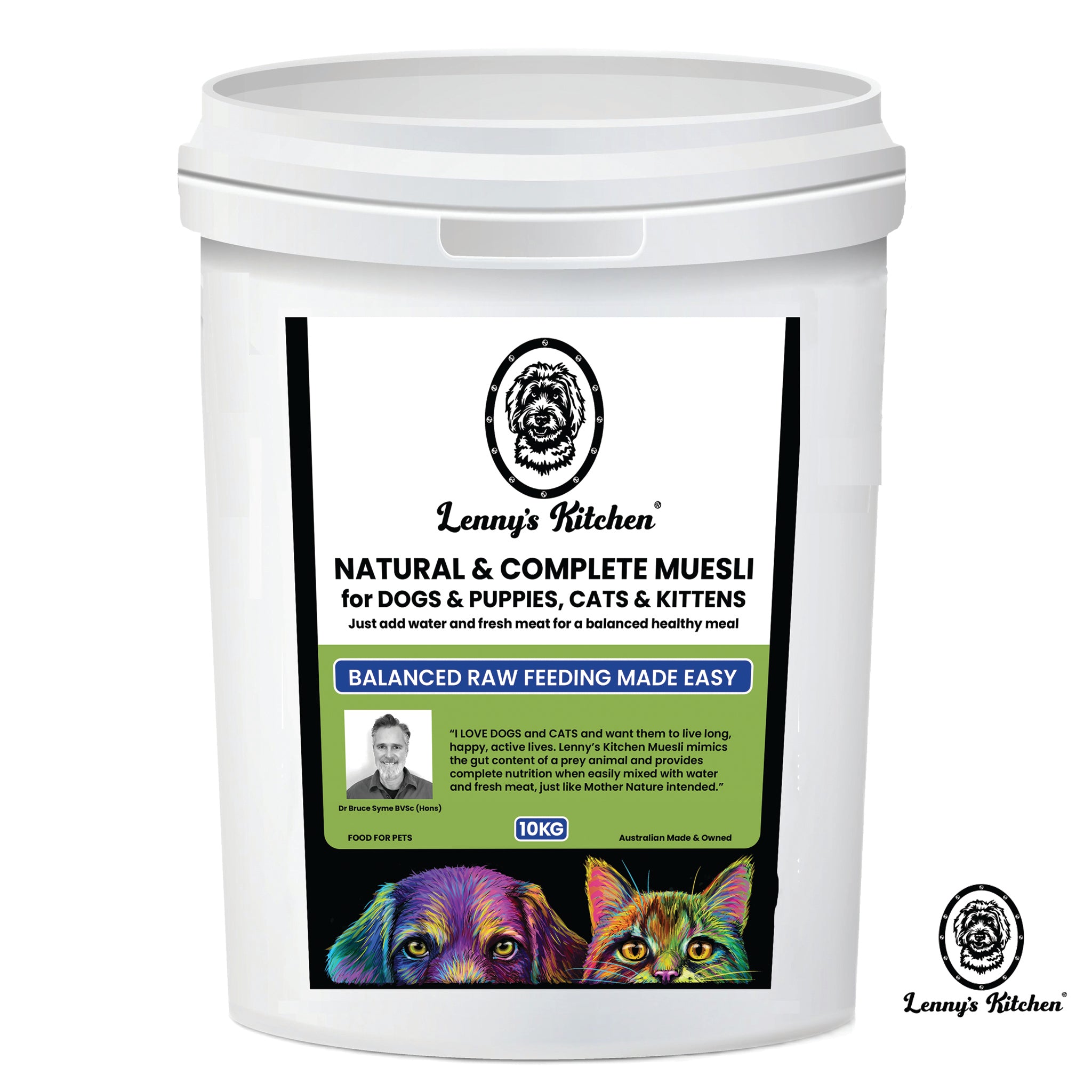Which Protein should I feed my Pet?
by Dr Bruce Syme BVSc (Hons) IVAS
Which protein to feed is a question I am asked constantly by concerned pet owners, when they have made the choice to swap to a natural, raw diet. When making a decision about which protein to feed, these key issues are to be considered:
Availability Cost Nutritional Factors Suitability Sustainability Farming Practices Processing
Kangaroo & Wallaby - My preferred choice of meats. Fresh kangaroo meat has been widely used in Australia as pet meat over 30 years, and more recently, it has made significant in-roads into the human food industry, with food professionals and nutritionists extolling its health benefits, great taste and versatility as a premium table meat. Wallaby meat, mainly harvested in Tasmania, is now emerging as option. Nutritionally, both meats are superior to all the farmed meats. It is low in fat (3 - 4%), high in protein, and high in vitamins and minerals. Because they are not farmed, the meat is truly free range, and organic. They graze a very wide variety of pastures, wild grasses, shrubs and trees, and as a result of this variety, they enjoy excellent health, and their meat has a wide array of macro and micro nutrients. They are considered as “cooling” meat, as they exist in a very dry and arid environment, and as such, is ideal for treating pets with food allergies. Culling is a very closely controlled, government regulated business.
Beef - One of the most widely available and most commonly used meat source for pet food, second only perhaps to chicken. Beef and beef by-products (by products indicating non-meat parts of the body like offal, bone, feet and horns) are the major red meat sources. The majority of beef used in processed pet food is actually meat meal a combination of all non-useable or non-saleable body parts from the abattoirs (eg bones with meat scraps left on, offal, contaminated carcass parts etc) which is ground to a pulp and then dried at high temperature to produce a powdered product. Meat meal generally forms the protein component of dry foods, and is also used, in combination with milled cereal and gelatine, to form the “meaty chunks” in tinned pet foods.
Fresh beef is not as commonly used as pet food, often due to price constraints and demand for table meats and export. Nutritionally, beef can be quite good, if it is raised naturally on pasture. It has good amounts of protein, and can have quite high fat content (14%+), and this level can be much higher in grain fed beef. In Traditional Chinese Medicine, beef is seen as a “heating” meat, because it originates from a colder climate. Beef is often raised using traditional farming practices, which include the use of chemical fertilisers, herbicides, drenches and antibiotics. Free range, organic beef can have a lower fat content than the traditionally farmed product, cost per kilo is higher.
Chicken - Chicken meat and by products are the most common source of pet meat used in commercial pet foods. This is primarily driven by price. Chickens are the most cheaply and intensively farmed of all the domesticated animal species. The commercial chicken industry’s methods are not based on the traditional image of chooks running around the farmyard. Although times are changing, battery farms still exist and chickens are raised and housed in sheds (in cages) their entire life, and are fed a man-made diet from birth. They can suffer from vitamin D deficiency by not being exposed to sunlight, no green grass or shoots to feed on, and no natural antioxidants. Antibiotics are often added to feed minimise the death toll, and a range of growth promoters. Nutritionally, chicken mince is highly questionable. It can be very high in fat (18%+), and even higher if the mix contains skin and fat. There is no doubt that wild chickens would be an ideal prey for both cats and dogs. A wild (organic) chicken would also provide excellent nutrition, as do their eggs. The very fact that they are relatively slow moving, and fly only when absolutely necessary would place them high on the predation list.
Turkey - A close relative of the chicken, turkey meat is becoming a more popular choice of meat for pet foods. It combines both 70% white meat and 30% dark meat, is both high in protein and low in fat (except for the skin). Turkey is a good nutritional source of iron, zinc, potassium and phosphorous, and contains vitamin B6 and niacin. Turkey farming is nowhere near as intensive as chicken sheds, and most birds enjoy a lot more space and outdoor time.
Goat - Goat meat, also known as Chevon, Capretto or Cabrito, is the most widely eaten meat in the world. Popularity in Australia is increasing as diversity in population grows. Feral goat meat is now commonly fed as pet meat. Goat is available at many butchers, and is becoming more widely available in supermarkets due to the demand attributed to its use on television cooking shows.
Goat meat is lean and lower in fat and cholesterol than chicken, lower in calories than beef, lamb and pork and contains iron levels higher than beef. The taste is described as being similar to lamb.
Venison - The meat sourced from deer, whether by hunting or farming, is known as venison (from the Greek, to hunt). It is also very high in protein and low in fat, and is an excellent choice as a unique protein source when managing food allergies. Venison is generally easy to purchase from butchers and some pet meat suppliers.
Lamb & Mutton - Lamb has recently become a popular meat source for pet food, introduced a “unique” source of protein, driven by the increase in targeting allergic skin conditions in dogs and cats. Due to cost, that the majority of lamb sold as pet meat is actually mutton, older sheep. Nutritionally, lamb is very good. It does have high fat content, much like beef, but it is all pasture grown, under good conditions, and the meat is of high quality. Lamb is also considered a “heating” meat, as sheep are native to cold climates. Lamb shanks are however, a common choice for a good meaty bone.
Pork - High in fat and often not well tolerated digestion wise by many pets. Meat meal made from pig carcasses is used in the manufacture of some pet treats, but on the whole, it is little used. Pigs are also very intensively farmed in modern countries, and suffer a similar fate as battery chickens, being raised and housed indoors, and being fed a man made ration, complete with antibiotics and growth promoters. Pigs are also highly sensitive to stress, suffering from a condition known as PSS (porcine stress syndrome), which can cause severe detrimental changes to the meat at slaughter.
Fish - Fish and fish meal has long been used in pet food, primarily in cat food. Fish meal is commonly used as a protein source, and flavouring agent, in many dry cat foods. Most fish fed to cats and dogs is tinned, not fresh, and is therefore not as nutritionally valuable. Many people use sardines or tuna, assuming that the naturally high levels of fish oil are of benefit – in truth, the cooking temperatures used in the canning process have significantly, if not totally, reduced the omega 3 content of the oil. Fish meat is a very good source of protein, low in fat, and high in vitamins and minerals – when it is first caught.
If you were to buy fresh fish and lightly cook it for your pets, it would be very good. It is also worthy of note that freshwater fish do contain levels of thiaminases, which can cause vitamin B1 deficiency if used exclusively as a diet. Whilst cats certainly enjoy the taste of fish (probably the salt), they are the last animal to be seen getting their feet wet – so we must conclude that fish is actually not a natural part of the cat’s diet. Cats can also react allergically to some of the deep water fish, like tuna, which can present as a generalised skin problem, with itching around the head and ears. Dogs may make the occasional attempts at catching fish in fresh water streams, but the only true fisherman is their close relatives, the bear.
Rabbit - Rabbit would have to be one of the most suitable all round meat sources for both dogs and cats. Wild rabbit is very similar to kangaroo, in the sense that it is a free range, organic meat, low in fat, and high in nutritional value. Until recently, wild rabbit has been widely available in Australia, but due to the introduction of the Calici virus, the supply of rabbit meat has largely been replaced with farmed rabbit, which unfortunately can fall victim to all the same problems as battery chickens.
Tripe - I will make special mention here of tripe as a meat source. Tripe is the common term for the stomach lining of cattle and sheep, also known as paunch. Green tripe is the term used for un-processed tripe and is highly nutritious as a meat source. It is very low in fat (2%), highly glandular (contains enzymes), and is loaded with probiotic micro organisms. Tripe sold for human consumption has been washed in boiling water and bleached. In Australia, Green tripe is very affordable but not always easy to source, sold only as pet meat in a frozen state.
Tripe is also a “white” meat (meaning it has a low amount of myoglobin, the protein that makes red meat red), and has historically been used for dogs with sensitive digestive tracts, or food allergies. I have utilised tripe for some time now as an alternate to kangaroo meat for treating difficult cases of allergic dermatitis in dogs and occasionally cats with great results.
Offal - Offal is the collective term used for organ meats, like liver, kidney, heart, lung etc. Offal is very rich in protein, vitamins and minerals, and ideally, should make up about 10% of a dog or cats meat intake. As a general rule, offal meats should be purchased from your local butcher, and be human grade, as the organs are often home to various parasites, and only human grade organ meats have had additional inspection processes applied to ensure they are free of parasites.



